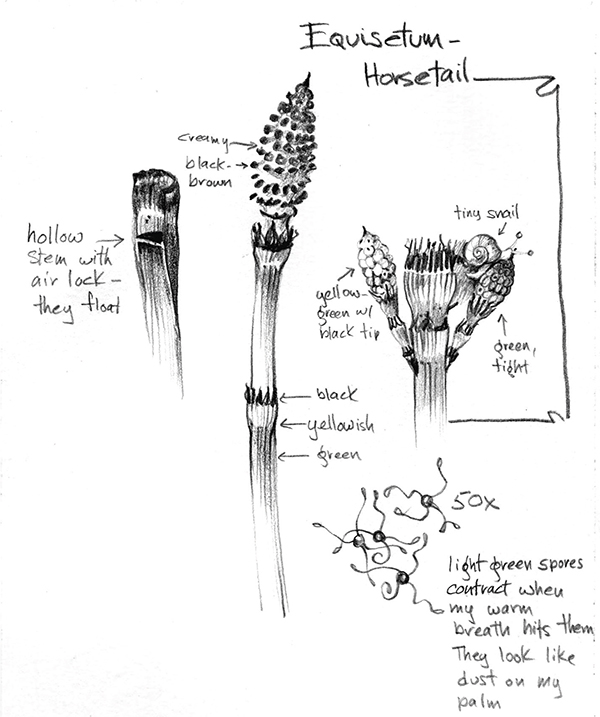
I love to make my own field journal pages, whether at home or abroad. Getting to know the area more intimately and understanding cause and effect in a given biosystem are two of the best reasons to sketch on the spot. Written notes, observations and a little habitat sketch help us learn more about where we find ourselves.
Special equipment is not necessary, but as you find yourself working outdoors more often, your curiosity may be piqued by things that are difficult to see with the naked eye. Either you’d like to see those distant birds more clearly and binoculars or a telescope may help, or you wonder what that tiny bit of lichen would look like if you could see it better. A small magnifying glass may be all you need, but you can buy a fairly inexpensive hand microscope at science stores and some sporting goods stores.
Binoculars can boost your vision many times over. Serious birders may need the big guns, but take a peek at what’s out there; you may be happy with a much less expensive, lightweight unit. (Be aware that it’s sometimes difficult to draw while holding up binoculars, so you will need to train your memory.)
I also have a small digital camera that works well to bring things closer. I occasionally need to shoot photos and work from them later, but I also shoot with an optical zoom, then zoom in again on the viewscreen and sketch distant details right then and there.
John Muir Laws has a telescope set up on a tripod, as you saw earlier in this chapter. Many serious outdoor nature painters do. It all depends on how much gear you want to carry into the field. Again, take weight into consideration if you’re going to walk far.

Equisetum, or horsetail, grows wild in damp places, so I took my hand microscope into the field with me. This graphite drawing was done with an HB mechanical pencil. The fine point allowed me to zero-in on the detail.

I noticed a gloriously golden field by the highway, but we were too far away to tell which member of the sunflower family we saw. My husband climbed over the gully to pick a few for me to study. I was able to ID Tickseed Coreopsis and made this ink and watercolor sketch.